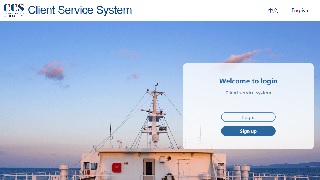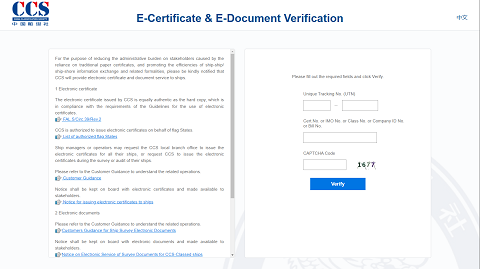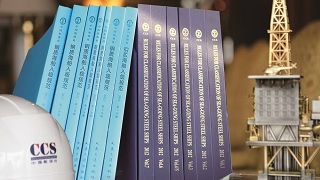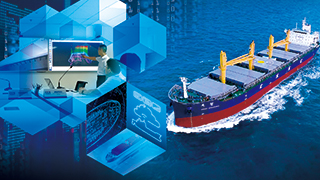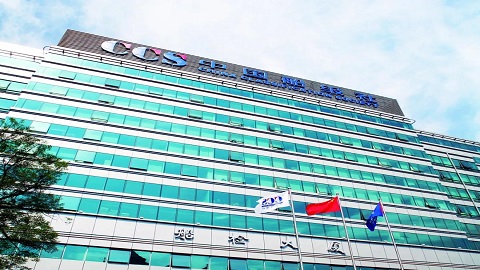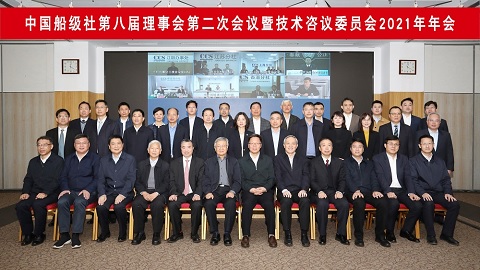Currently, ammonia fuel is widely regarded as one of the important alternative fuels for the international shipping industry to achieve the net zero emissions target by 2050. This paper analyzes the main risks of ships using ammonia fuel from the physical and chemical properties and combustion characteristics of ammonia, and sorts out the key technologies for ships using ammonia fuel, in order to provide reference for the safe application of ammonia fuel in ships.
By Lei Wei CCS Wuhan Rules & Research Institute

Currently, ammonia fuel is widely regarded as one of
the important alternative fuels for the international shipping industry to
achieve the net zero emissions target by 2050. This paper analyzes the main
risks of ships using ammonia fuel from the physical and chemical properties and
combustion characteristics of ammonia, and sorts out the key technologies for
ships using ammonia fuel, in order to provide reference for the safe
application of ammonia fuel in ships.
Basic Characteristics of
Ammonia
1. Physical and Chemical Characteristics
Ammonia is a flammable hydrogen-rich compound (NH3)
that does not contain carbon. Water and nitrogen instead of pollutants or
greenhouse gas CO2 are generated during complete combustion; the volumetric
energy density of ammonia is higher than that of liquid hydrogen and lower than
that of methanol and LNG; ammonia is a chemically stable, colorless gas with a
pungent odor at room temperature and pressure. It can liquefy at -33.4 ℃ or 12 bar at room temperature, which makes it easy to store and
transport; ammonia is mainly synthesized artificially, and easily decomposed
into hydrogen and nitrogen under the action of heating or catalyst; ammonia has
moderate toxicity and is easily soluble in water, ethanol, ether, and
chloroform, and it is weakly alkaline when dissolved in water and easily
volatile; the vapor density of ammonia is lower than that of air, and it can
diffuse quickly in open spaces when leakage occurs.

Table 1: Comparison of Characteristic Parameters Between Ammonia and Other
Fuels
2. Combustion Properties
The comparison of characteristic parameters between
ammonia and other fuels is shown in Table 1. The combustion characteristics of
ammonia as a fuel are as follows:

(Source:MSDS for Ammonia Chemicals)
Table 2 Industrial Classification of Ammonia Exposure

Fig.1 Safety Risks of Ammonia Fuel
(1) With high octane value and good explosion
resistance performance, it can increase the compression ratio when being
applied to engines, theoretically increasing the engine thermal efficiency to
over 60%.
(2) The self-ignition temperature of ammonia can reach
up to 650℃, which makes it difficult to achieve direct
compression ignition in compression ignition engine, so a higher compression
ratio and inlet temperature are required. At present, the compression ratio of
typical compression ignition engine is generally 16-23:1. If no ignition medium
or combustion improver is used, the compression ratio of ammonia fuel engine
should reach 35:1, which places strict requirements on the design and
development of marine engines. The general practice is to use ignition medium
(such as ignition oil);
(3) With a slow flame propagation speed, it takes a
long time for ammonia to burn in the engine, which is not conducive to
improving the power and economy. Generally, methods such as ignition
medium/combustion improver, ammonia cracking hydrogen gas for combustion
assistance, adjusting the engine ignition advance angle, etc. can be adopted to
solve this problem.
Main Risks of Ships Using
Ammonia Fuel
The main risks of ships using ammonia fuel are
reflected in three aspects: toxicity, corrosivity, and explosiveness.
1. Toxicity
The toxicity of ammonia can be divided into human
toxicity and ecological toxicity. In terms of human toxicity, ammonia has a
strong irritant effect on the human mucosa. Inhaling ammonia can cause
laryngeal spasms, pharyngitis, bronchitis, etc., and it may even lead to
suffocation and death if left untreated. Ammonia may result in a burning
sensation and make the skin red if it comes into contact with the skin.
The degree of toxicity of ammonia to the human body
depends on the concentration and duration of exposure. Long-term exposure to
ammonia with a concentration below 25ppm can cause mild irritation, short-term
exposure to ammonia with a concentration around 220ppm can cause serious
injury, while exposure to ammonia with a concentration of 390ppm or higher can
cause fatal injury.
In terms of ecological toxicity, ammonia poses a
serious threat to the environment, and special attention should be paid to its
pollution of surface water, soil, atmosphere, and drinking water. It has been
proven that ammonia has acute and chronic toxicity to many different freshwater
and marine animal species.

Fig.2 Ammonia Safety Protection
2. Corrosivity
Ammonia has strong corrosivity to copper, zinc, nickel
and their alloys, and plastics, and these materials should not be used for
ammonia storage and transportation. Steel is commonly used as the metal in
ammonia storage tanks, pipelines, and fittings. In addition, anhydrous liquid
ammonia can cause stress corrosion cracking (SCC) in containers made of carbon
steel and high-strength low-alloy steel at -33°C, but stainless steel has not
shown a cracking trend in ammonia under any conditions.
For seals, nitrile rubber is usually used instead of
conventional rubber because the latter can be decomposed by ammonia. For nickel
alloys, the nickel content should be below 5%.
3. Explosiveness
Ammonia has a lower risk of explosion compared to
other gas fuels. One reason is that ammonia has a high ignition energy and is
not easy to ignite; the other reason is that ammonia (15%) has a relatively
high lower limit of flammable concentration (15%), which makes it difficult to
form a flammable environment. However, for a combustion environment already
formed by other combustibles such as fuel, the presence of ammonia can
exacerbate the consequences of explosion. Moreover, ammonia reacts with some
strong oxidants (such as chlorine, hypochlorite bleach, etc.) to produce
explosive compounds.
Key Points for Risk Control of
Ships Using Ammonia Fuel
1. Toxicity Protection of Ammonia
Toxicity is the primary risk to be controlled for
ships using ammonia fuel. The primary principle for controlling toxicity is to
control ammonia leakage, followed by preventing ammonia accumulation,
preventing ammonia contact, and finally the life-saving measures.
In terms of the rules for ships, the main means of
controlling ammonia leakage are to use double-walled pipes, avoid threaded
joints as much as possible, etc.; the main methods to prevent ammonia
accumulation are mechanical ventilation, water spraying, etc; the main measures
to prevent ammonia contact are to divide toxic areas, restrict personnel from
entering high-risk leakage areas, equip personnel with protective equipment,
etc.; the life-saving measures mainly include arranging safe escape routes,
setting up emergency shelters, equipping sufficient first-aid facilities, etc.
2. Storage of Ammonia
The safe storage of ammonia is crucial for preventing
its toxic hazards. The storage methods of ammonia fuel include full-pressurized,
fully-refrigerated, and semi-refrigerated and semi-pressurized. As for ammonia
as cargo, the main types of cargo hold include membrane hold and independent
hold. Among them, the membrane hold mainly has two types: NO 96 and MARK III,
while the independent hold has three types: A-type hold, B-type hold, and
C-type hold. However, as for fuel, the International Maritime Organization
(IMO) has clearly specified in the "Interim Guidelines for the Safety of
Ships Using Ammonia Fuel" finalized after discussion at the 10th meeting
of the Container and Transportation Subcommittee recently that only
fully-refrigerated storage methods are allowed for ammonia fuel tanks.
Therefore, in the future, membrane tanks and A-type and B-type independent
tanks will be mainly considered, and common C-type pressure tanks will not be
accepted. This is mainly due to the relatively small toxicity of liquid ammonia
at low temperature. For the current lack of practical experience in ship
applications, IMO has adopted a more conservative approach. In the future, with
the increase of application experience and the maturity of technology, it is
not ruled out that the C-type pressure tank will be included in the applicable
types of ammonia fuel tanks.
3. Bunkering of Ammonia
The bunkering of ammonia includes two aspects: the
arrangement of bunkering station, the bunkering system and equipment. In terms
of the arrangement of bunkering station, since the bunkering station is a
high-risk area for leakage, it is recommended to adopt enclosed arrangement to
avoid the diffusion of leaked ammonia fuel into the environment.
At the same time, open space arrangement is also
allowed, but sufficient risk analysis and safety protection measures need to be
taken. In terms of bunkering system and equipment, it mainly includes emergency
pull-off valve, dry quick connectors, drip trays, leakage detection, etc.
Considering the risk of explosion, the bunkering station should be equipped
with proper fixed fire extinguishing facilities and portable fire extinguishing
equipment. In terms of the toxicity of ammonia fuel, personal protective
equipment and washing and disinfection facilities should be provided for the
bunkering personnel.
4. Release Treatment of Ammonia
There may be many normal and foreseeable ammonia
releases for the ships using ammonia fuel. Normal ammonia release includes blow
through of bunkering pipelines, supply pipelines, and gas-freeing of tanks,
etc.; abnormal but foreseeable ammonia release includes ammonia vapor
discharged from double-walled pipes or ventilation openings after leakage in
the pipelines or equipment. The IMO "Interim Guidelines for the Safety of
Ships Using Ammonia Fuel" has clearly specified that the above-mentioned
ammonia release must not be directly discharged into the atmosphere, and must
be treated accordingly to achieve the corresponding outlet concentration. It
requires the ships to be equipped with an ammonia release management system
(ARMS). The common types of ARMS include water absorption device, gas
combustion unit, catalytic cracking device, air dilution system, water mist
system, etc. The International Association of Classification Societies (IACS)
is developing a unified reference (UR) for the design and testing of ARMS,
which is expected to be released soon.
From a comprehensive perspective, currently, there has
been a good foundation for the application of ammonia fuel in ships. As long as
sufficient risk analysis is made and sufficient safety measures are taken, with
the progress of ammonia fuel preparation technology and the decrease in cost,
the ammonia fuel will be widely applied in ships and occupy an important share
of alternative fuels for ships in the future.
Note: If you need to reprint, please indicate the source of the information.

